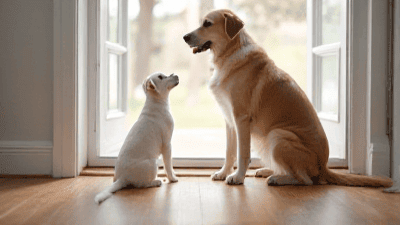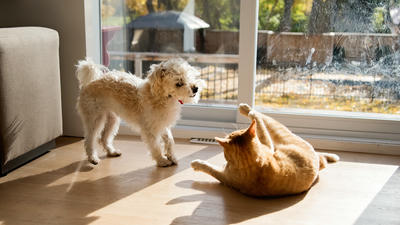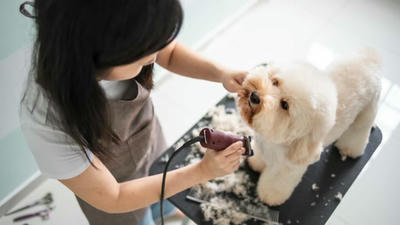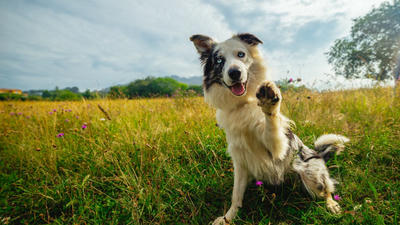
Bringing a pet into your home is an exciting experience filled with joy and companionship. However, it also comes with the responsibility of ensuring your living space is safe, comfortable, and accommodating for your furry friends. Creating a pet-friendly environment involves considering not just aesthetics but also functionality and safety.
Understanding Your Pet’s Needs
Before diving into specific design tips, it’s essential to understand your pet’s specific needs. Different types of pets have varying requirements, and understanding these will help you make informed decisions.
Dogs
Dogs, depending on their size and breed, may require different spaces for resting, playing, and exercising. Larger breeds often need more room to move around, while smaller breeds may adapt more easily to smaller spaces. All dogs require areas for eating, sleeping, and access to outdoor spaces for bathroom breaks and exercise.
Cats
Cats often thrive in environments where they can climb and explore. Vertical space can be especially important for them, so incorporating shelves or cat trees is a great way to provide enrichment. Additionally, they require safe spaces to retreat to when feeling stressed or overwhelmed.
Small Pets
If you have small animals such as rabbits, guinea pigs, or hamsters, their habitats must be tailored to their needs. This may include specific enclosures, bedding types, and areas for exercise and play.
Understanding these requirements will guide your choices as you design your pet-friendly home.
Choosing the Right Flooring
Selecting the right flooring is one of the most significant aspects of creating a pet-friendly environment. Consider the following options:
1. Hard Surfaces
Hard surfaces like tile, laminate, or hardwood are often ideal for pet owners. They are easier to clean and less likely to absorb odors. However, it is essential to consider finish and texture—smooth surfaces can be slippery for dogs, so textured options may be better.
2. Area Rugs and Carpets
While carpets can provide comfort, they are more challenging to clean and maintain with pets. If you choose to use rugs, consider low-pile options that are washable. This will make it easier to deal with accidents and shedding.
3. Non-Toxic Materials
Make sure that any materials you choose are non-toxic for pets. Some flooring solutions may contain harmful chemicals, which can be harmful to pets if ingested or inhaled. Look for eco-friendly flooring options that are safe for both pets and humans.
Declutter and Organize
A clutter-free home is a necessity when living with pets. Not only does it make your space look more appealing, but it also reduces hazards for your pets. Here are some tips to keep your home organized:
1. Create a Designated Pet Area
Designate specific areas for your pet’s belongings, such as feeding dishes, toys, and beds. This will help keep these items from cluttering common areas and provide your pet with a sense of ownership in the home.
2. Use Storage Solutions
Utilize storage bins and baskets to neatly organize pet toys and supplies. Consider furniture that doubles as storage, such as ottomans or benches with hidden compartments. Not only does this keep your home looking tidy, but it also allows for easy access to your pet’s essentials.
Selecting Safe Furniture
Choosing the right furniture is crucial to creating a pet-friendly home. Here are some tips when it comes to selecting furniture:
1. Durable Fabrics
Opt for pet-friendly fabrics that are durable and easy to clean. Materials such as microfiber, leather, and tightly woven fabrics are often more resistant to stains and scratches. Avoid materials that attract hair and are difficult to clean.
2. Elevated Furniture
If you have dogs, consider selecting furniture that is elevated to allow them to easily watch the activity in the room without needing to hop onto the furniture. This can prevent accidental scratches and also helps keep the furniture cleaner.
3. Secure Items
Make sure that all furniture is stable and secure to prevent tipping if your pet jumps on it. Avoid items with sharp edges or corners that could present a danger to playful pets.
Providing Comfortable Spaces
Creating comfortable areas for your pets is essential for their well-being. Here are some tips on how to achieve this:
1. Pet Beds
Provide comfortable and supportive beds for your pets. Choose beds that are easy to clean and made from hypoallergenic materials. Place beds in cozy, quiet areas where your pets can retreat and feel safe.
2. Climate Control
Ensure that your home is comfortable in terms of temperature. Pets can be sensitive to extreme temperatures, so consider providing shaded areas or warm blankets for comfort. Use suitable heating and cooling solutions that help maintain a comfortable environment.
3. Safe Hiding Spots
Create safe places where your pets can retreat when feeling anxious or overstimulated. This could include cozy corners, crates, or enclosed spaces. Make sure these areas are accessible and inviting.

Ensuring Safety
Safety is paramount when creating a pet-friendly home. Consider the following safety measures:
1. Childproofing
Much like you would childproof a home, it’s essential to take precautions to protect your pets. Use gates to limit access to particular areas or keep them away from stairs. Secure heavy furniture and appliances to prevent tipping.
2. Toxic Plants
Remove any toxic plants from your home to eliminate the risk of poisoning. Common houseplants such as lilies, philodendrons, and pothos can be hazardous to pets. Consult a list of pet-safe plants when selecting greenery for your home.
3. Windows and Balconies
Ensure that windows and balconies have secure screens or barriers. Curious pets might try to jump out or accidentally fall, so it’s important to create a secure environment.
4. Electrical and Hazards
Keep electrical cords and cables out of reach to prevent chewing or entanglement. Store cleaning supplies, medications, and other hazardous materials in secure cabinets.
Outdoor Spaces
If you have a garden or outdoor area, it’s important to design it with your pets in mind. Here are some tips for creating a pet-friendly outdoor space:
1. Secure Fencing
Ensure that your yard is safely enclosed with secure fencing. This keeps your pets from wandering off or encountering potential dangers outside. Regularly check the fencing for gaps or weaknesses.
2. Safe Plants and Landscaping
Select non-toxic plants and materials for your outdoor area. Some common landscaping plants can be toxic to pets, so researching and choosing pet-safe alternatives is crucial.
3. Shady Areas
Create shaded areas in your yard where pets can retreat from direct sunlight. Installing a pergola or using umbrellas can provide essential shade.
4. Designated Play Areas
Designate specific areas in your yard for play and exercise. This can include clear spaces for fetch or agility courses. Having a designated play area helps keep your yard organized and allows pets to enjoy outdoor activities safely.
Maintaining Cleanliness
Keeping your home clean and odor-free is an important aspect of maintaining a pet-friendly environment. Here are some steps to help with cleanliness:
1. Regular Cleaning Routines
Establish a regular cleaning routine that includes vacuuming, mopping, and washing pet beds and toys. This prevents the buildup of pet hair, dander, and odors.
2. Use Machine-Washable Items
Opt for machine-washable pet items, including blankets, beds, and slipcovers. This makes it easier to maintain cleanliness in your home.
3. Designate a Pet Area for Grooming
Create a specific area for grooming your pets. This can help contain loose fur and minimize messes in other parts of your home. Make sure to have grooming tools, towels, and wipes readily available.
Training for Good Behavior
While physical adjustments to your home are important, training your pets to behave well in their environment is equally crucial. Here are some training tips:
1. Basic Commands
Teach basic commands such as “sit,” “stay,” “leave it,” and “come.” These commands can help you maintain control over your pets and create a calmer household.
2. Positive Reinforcement
Use positive reinforcement techniques to encourage good behavior. Reward your pet with treats, affection, and praise whenever they follow commands or exhibit good behavior.
3. Address Problem Behaviors Early
Implement training techniques early to address any problematic behaviors such as chewing, jumping, or barking. The sooner you correct these behaviors, the less likely they will become ingrained habits.
Conclusion
Creating a pet-friendly home means considering both comfort and safety for your beloved companions. By understanding your pet’s needs and making thoughtful design choices, you can establish an environment where both you and your pets can thrive together. Remember that a little planning goes a long way in ensuring a happy, healthy, and safe home for your furry friends. Your pets will thank you with love and loyalty for providing them with a space where they feel secure and comfortable.



